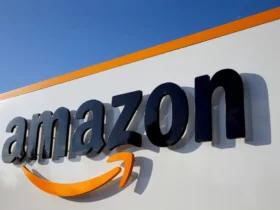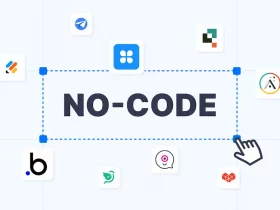As an Amazon seller, finding profitable products to resell can be a daunting task. One popular method that many sellers use is retail arbitrage, which involves buying discounted products from retailers and then reselling them on Amazon for a profit. However, manually searching for profitable products can be time-consuming and inefficient. This is where Amazon arbitrage apps come in handy.
Amazon arbitrage apps are tools that help sellers find profitable products to resell on Amazon. These apps use various features such as barcode scanning, sales rank tracking, and price history analysis to provide sellers with valuable insights into the products they are considering. With the help of these apps, sellers can quickly and easily identify profitable products, saving them time and effort.
There are many Amazon arbitrage apps available, each with its own unique features and pricing. Some popular options include Helium 10, Jungle Scout, and the Amazon Seller app. You can also read our list of best chrome extensions for Amazon sellers. . Whether you are a seasoned seller or just starting out, using an Amazon arbitrage app can help you streamline your product sourcing process and increase your chances of success on the platform.
Understanding Amazon Arbitrage
As an Amazon seller, I have found that Amazon arbitrage can be a profitable business model. Amazon arbitrage is the practice of buying products from one retailer and reselling them on Amazon for a higher price. It is a popular method used by many Amazon sellers to make a profit.
One of the benefits of Amazon arbitrage is that it does not require a lot of effort to get started. All you need is an Amazon seller account, a smartphone, and a scanning app. You can easily scan barcodes of products in retail stores, and the scanning app will show you the current price on Amazon. If the product is selling for a higher price on Amazon than the retail store, you can purchase it and resell it on Amazon for a profit.
To be successful in Amazon arbitrage, it is important to do your research. You need to research the potential profit, competition, and sales rank of the product. You can use tools such as Keepa and CamelCamelCamel to track the price history of a product and determine if it is a profitable product to sell.
Another important aspect of Amazon arbitrage is managing your inventory. You need to keep track of your inventory levels and make sure you have enough products to fulfill orders. You can use inventory management tools such as InventoryLab to help you keep track of your inventory and manage your orders.
It is also important to understand the fees associated with selling on Amazon. Amazon charges fees for selling on their platform, and you need to factor these fees into your pricing strategy. You can use Amazon’s fee calculator to determine the fees associated with selling a product on Amazon.
Overall, Amazon arbitrage can be a profitable business model if done correctly. It is important to do your research, manage your inventory, and understand the fees associated with selling on Amazon. With the right tools and strategies, Amazon arbitrage can be a great way to make money on Amazon.
Key Features of Amazon Arbitrage Apps
As an Amazon arbitrage seller, I know how important it is to have the right tools to help me find profitable products and manage my inventory. After researching and testing various Amazon arbitrage apps, I have identified the key features that are essential for any good app.
Listing and Scanning Features
One of the most important features of an Amazon arbitrage app is the ability to easily list and scan products. A good app should allow you to scan barcodes or enter ASINs to quickly retrieve product information, including sales rank, price history, and competition. It should also allow you to easily create listings, including adding product images and descriptions.
Profitability and Research Tools
Another important feature is the ability to research product profitability and find new product ideas. A good app should allow you to analyze data such as ROI, profit margin, and buy box percentage to determine if a product is worth selling. It should also have tools for product research, such as keyword and barcode searches, and provide suggestions for profitable products based on your sales history and competition.
Inventory Management and FBA Labeling
An Amazon arbitrage app should also have inventory management tools to help you keep track of your stock levels and sales. It should allow you to easily track your inventory, create purchase orders, and manage your FBA shipments. Additionally, it should have a feature to print FBA labels with ease.
Chrome Extension and Sales History
A useful feature for any Amazon arbitrage seller is a Chrome extension that allows you to quickly analyze product data while browsing Amazon. It should provide information such as monthly sales and competition, and allow you to easily add products to your inventory. Additionally, it should have a sales history feature that shows you how well a product has sold over time.
Overall, a good Amazon arbitrage app should be easy to use, provide accurate and relevant data, and have the necessary features to help you find profitable products and manage your inventory effectively.
Selecting Profitable Products
When it comes to Amazon arbitrage, selecting profitable products is the key to success. As an Amazon seller, I always look for products that can provide me with a good profit margin. Here are some of the factors I consider when selecting profitable products:
Sales Rank
Sales rank is a crucial factor to consider when selecting a profitable product. A high sales rank indicates that a product is selling well, which means that there is demand for it. However, a low sales rank doesn’t necessarily mean that a product is not profitable. It could mean that the product is new, or it’s a niche product with limited competition.
Profit Calculation
Profit calculation is another important factor to consider when selecting profitable products. I always calculate the potential profit before making an order. I consider the current price, selling price, and profit margin to calculate the potential profit. I also factor in the cost of shipping, handling, and other fees associated with selling on Amazon.
Competition
Competition is another factor to consider when selecting profitable products. I always look for products with low competition. If a product has too many sellers, it can be challenging to get the buy box, which can affect sales. I also look for products that are not restricted, as restricted products can limit the potential profit.
Product Sourcing
Product sourcing is crucial when it comes to selecting profitable products. I use online arbitrage to find products that are available at a lower price, which I can resell on Amazon. I also look for products that are on clearance or sale at retail stores. I always ensure that the products I source are in good condition and meet Amazon’s quality standards.
In conclusion, selecting profitable products is the foundation of a successful Amazon arbitrage business. By considering factors such as sales rank, profit calculation, competition, and product sourcing, I can identify profitable products that can provide me with a good profit margin.
Understanding Amazon Arbitrage Business Model
As an Amazon arbitrage seller, I buy products from retail stores or online marketplaces and resell them on Amazon for a profit. This business model is simple and requires minimal investment. I don’t have to worry about inventory management, product development, or branding. All I need to do is find profitable products and get them to Amazon.
One of the advantages of Amazon arbitrage is that I can start with a small budget. I can buy products at a discount from retail stores or online marketplaces and resell them on Amazon at a higher price. I can also use tools like CamelCamelCamel and Keepa to track the price history of products and identify profitable opportunities.
However, there are some challenges to the Amazon arbitrage business model. One of the main challenges is competition. There are many other sellers who are also reselling products on Amazon. I need to find profitable products that are not oversaturated with sellers. I also need to price my products competitively to attract buyers.
Another challenge is Amazon fees. As an FBA seller, I need to pay fees for storage, fulfillment, and referral. These fees can eat into my profits if I am not careful. I need to factor in these fees when pricing my products and make sure that I am still making a profit after paying them.
Product sourcing is also an important aspect of the Amazon arbitrage business model. I need to find reliable suppliers who can provide me with profitable products on a regular basis. I can source products from retail stores, online marketplaces, wholesale suppliers, and liquidation sales.
In conclusion, Amazon arbitrage is a simple and low-risk business model that can be profitable if done correctly. I need to find profitable products, price them competitively, and factor in Amazon fees. I also need to find reliable suppliers and stay on top of market trends and competition.
Navigating Amazon Seller Tools
As an Amazon seller, I often find myself overwhelmed with the number of tools and apps available to me. However, I have found that by using the right tools, I can streamline my business and increase my profits. In this section, I will share my experience and knowledge on how to navigate Amazon seller tools.
One of the most important tools for any Amazon seller is the Amazon Seller App. This app is free to use with your Amazon seller account and allows you to scan products in retail stores. It provides you with essential information such as the product’s sales rank, price, and whether it is restricted or not. Additionally, the app helps you manage orders, product listings, and inventory.
Another useful tool for Amazon sellers is InventoryLab. This tool helps you manage your inventory and provides detailed reports on your sales and profits. It also integrates with Amazon’s FBA seller program, making it easy to manage your shipments and track your inventory.
Jungle Scout is another popular tool for Amazon sellers. It helps you find profitable products to sell on Amazon by providing you with data on sales rank, price, and competition. You can also use Jungle Scout to track your competitors and monitor their sales.
When it comes to scanning apps, there are many options available. However, I have found that the Amazon Seller App and Scoutify are the most reliable and fast. Scoutify is a scanning app developed by InventoryLab, and it provides you with similar information as the Amazon Seller App.
In conclusion, navigating Amazon seller tools can be overwhelming at first. However, by using the right tools, you can streamline your business and increase your profits. The Amazon Seller App, InventoryLab, Jungle Scout, and Scoutify are just a few of the tools available to Amazon sellers. I recommend trying out different tools and finding the ones that work best for you.
Leveraging Data for Amazon Arbitrage
As an Amazon arbitrage seller, I know how important it is to make informed decisions when it comes to sourcing products. That’s why I always leverage data to help me find profitable products to sell on Amazon.
One of the most useful types of data for Amazon arbitrage is price history. By using tools like Keepa or CamelCamelCamel, I can quickly and easily see the price history of a product on Amazon. This helps me determine whether a product is likely to sell at a good price or not.
Another type of data that I find useful is sales history. By looking at a product’s sales history, I can get a sense of how popular it is and how quickly it sells. This helps me avoid products that may sit on the shelf for too long.
Keyword research is also important when it comes to Amazon arbitrage. By using tools like MerchantWords or Jungle Scout, I can see which keywords are most popular for a particular product. This helps me optimize my listings and increase my chances of ranking higher in search results.
When it comes to online arbitrage, I find that using tools like Tactical Arbitrage or OAXray can be incredibly helpful. These tools allow me to quickly search multiple online marketplaces for products that meet my criteria.
Finally, using a database mode like the one offered by Helium 10 can help me quickly analyze a large number of products at once. This saves me time and allows me to focus on the products that are most likely to be profitable.
By leveraging data in these ways, I am able to make informed decisions when it comes to sourcing products for Amazon arbitrage. This helps me increase my profits and grow my business over time.
Understanding Amazon Fees and Taxes
As an Amazon arbitrage seller, it’s important to understand the fees and taxes associated with selling on the platform. Here are some key points to keep in mind:
Amazon Fees
Amazon charges various fees to sellers, including referral fees, fulfillment fees, and storage fees. Referral fees are a percentage of the item’s sale price, and vary depending on the category of the item. Fulfillment fees are charged when Amazon handles the shipping and handling of the item, and also vary depending on the size and weight of the item. Storage fees are charged for items that are stored in Amazon’s warehouses for more than a certain amount of time.
It’s important to factor in these fees when calculating your profit margins for each item. You can use Amazon’s fee calculator tool to estimate the fees for a particular item before you list it for sale.
Expenses
In addition to Amazon’s fees, you’ll also need to consider your own expenses as an Amazon arbitrage seller. This may include the cost of purchasing items from retail stores or online marketplaces, as well as any shipping or packaging costs associated with getting the items to Amazon’s warehouses.
To maximize your profits, it’s important to keep your expenses as low as possible. This may mean shopping around for the best deals on products, or finding ways to reduce your shipping costs.
Taxes
As a seller on Amazon, you may also be responsible for collecting and remitting sales tax on your sales. The rules around sales tax can be complex, as they vary depending on the state or locality where the sale takes place.
To ensure that you’re compliant with all applicable tax laws, it’s a good idea to consult with a tax professional or use a tax software program that is specifically designed for Amazon sellers. Amazon also offers a tax calculation service that can help you calculate and collect sales tax on your behalf.
By understanding the fees and taxes associated with selling on Amazon, you can make informed decisions about which products to sell and how to price them for maximum profitability.
Exploring Top Amazon Arbitrage Apps
As an Amazon seller, I have found that using the right arbitrage app can make a huge difference in my business. Here are some of the top Amazon arbitrage apps that I have found to be useful:
Scoutify 2
Scoutify 2 is a popular retail arbitrage app that is part of the InventoryLab suite of tools. It allows you to scan barcodes and get real-time pricing and sales data for products on Amazon. The app also includes features such as profit calculations, historical sales data, and more.
Jungle Scout
Jungle Scout is another popular Amazon arbitrage app that offers a variety of features for sellers. It includes a product database, which allows you to search for products based on criteria such as sales rank, price, and more. The app also includes a product tracker, which allows you to monitor the sales and pricing of products over time.
Profit Bandit
Profit Bandit is a mobile app that allows you to scan barcodes and get real-time pricing and sales data for products on Amazon. It includes features such as profit calculations, historical sales data, and more. The app also includes a feature called “Instant List,” which allows you to quickly create a list of products to buy based on your search criteria.
FBA Scan
FBA Scan is another popular Amazon arbitrage app that allows you to scan barcodes and get real-time pricing and sales data for products on Amazon. It includes features such as profit calculations, historical sales data, and more. The app also includes a feature called “Inventory Lab,” which allows you to manage your inventory and track your sales.
BrickSeek
BrickSeek is a retail arbitrage app that allows you to search for clearance and discounted products at major retailers such as Walmart, Target, and more. The app includes features such as price tracking, inventory tracking, and more. It also includes a feature called “Local Inventory,” which allows you to search for products at nearby stores.
IP Alert
IP Alert is an Amazon arbitrage app that allows you to monitor your listings and receive alerts when there are changes or issues with your products. The app includes features such as listing monitoring, hijack alerts, and more. It also includes a feature called “Research Central,” which allows you to research products and keywords to optimize your listings.
Scoutly
Scoutly is a mobile app that allows you to scan barcodes and get real-time pricing and sales data for products on Amazon. It includes features such as profit calculations, historical sales data, and more. The app also includes a feature called “Scouting Assistant,” which allows you to quickly create a list of products to buy based on your search criteria.
Overall, these Amazon arbitrage apps can help you to find profitable products, manage your inventory, and optimize your listings. By using the right app for your business, you can save time, increase your profits, and grow your Amazon business.













